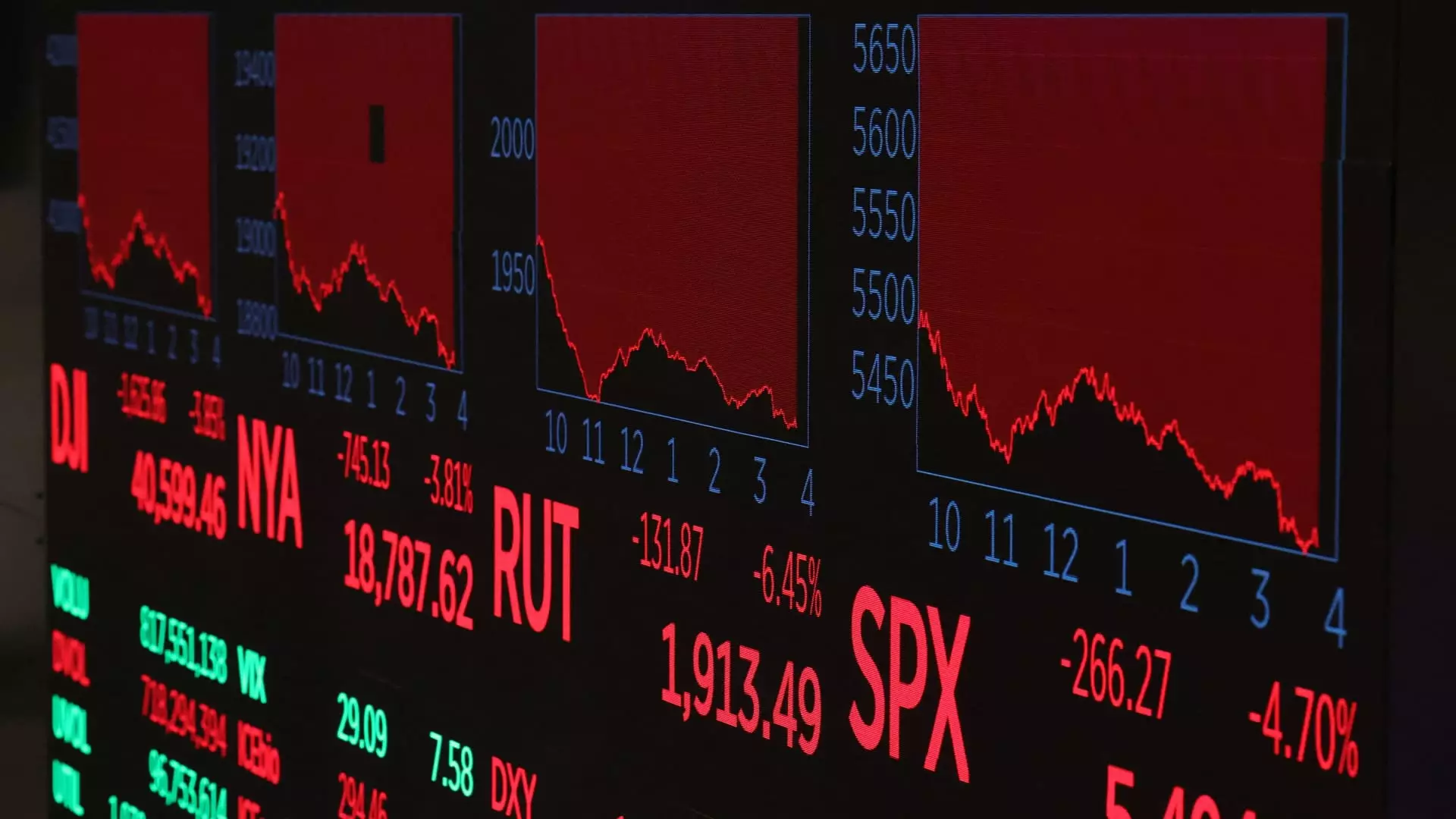In a time of economic turbulence, when seasoned Wall Street investors cower in fear of impending recession, a whole new wave of retail investors emerges unfazed. Recent events sparked by President Trump’s fluctuating tariff plans have tossed the stock market into a wild tempest, yet many everyday investors view this as an opportunity rather than a disaster. The current climate illustrates a paradox where the anxiety of institutional investors contrasts sharply with the audacious confidence of retail traders. The reactions to these economic signals reveal a generational divide in financial strategy, raising questions about our understanding of market behavior.
Consider Rachel Hazit, a 32-year-old marketer from Philadelphia. Unlike the panic-driven reactions of institutional investors, she embraced the fluctuating stock market with open arms, feeling as though she was witnessing her first major dip as someone involved in equities. Her mindset exemplifies a new breed of investors who believe that market declines equate to bargains. When stocks plunged, her perspective was clear: “This is on sale,” she remarked, demonstrating a refreshing take amid chaos. This attitude, viewed through a wider lens, sheds light on how traditional investment wisdom is being redefined by a younger, more optimistic demographic.
The Calculated Risks Taken by Retail Investors
The influx of retail investors, like Hazit, reveals a seismic shift in market engagement. Data shows that billions are flowing from self-directed traders into the U.S. stock market, actively countering the tendencies of institutional investors to retreat during market fluctuations. For instance, when the S&P 500 plummeted nearly 5% in early April due to news about tariffs, retail investors poured over $3 billion into equities—a record-setting move for daily net inflows.
The reaction of retail investors raises implications about the broader economic understanding among this group. Retail traders aren’t just throwing darts blindfolded; they are strategically “buying the dip,” adhering to a time-tested approach that aims to capitalize on temporary setbacks. This method of purchasing discounted equities is particularly pronounced among those investing in diversified Exchange-Traded Funds (ETFs) like Vanguard’s VOO; such choices reflect a gradual shift from high-frequency trading to a focus on building sustainable portfolios.
Understanding the Emotional Undercurrents
Yet, it’s essential to recognize the emotional undercurrents that accompany such bold financial moves. Emotional resilience appears to be a hallmark of this retail investing cohort, but not without its strains. Hazit, alongside others, acknowledges an inherent tension: balancing optimism about investment opportunities against the fear of long-term economic repercussions, such as inflation or shifts in consumer spending spurred by tariffs. Despite their active participation, the unease is palpable. Hazit noted, “It’s definitely not a good time. It’s scary,” highlighting that even while engaging in the market, there is an awareness of underlying economic instability.
Moreover, the current behavior of retail investors reflects a larger cultural zeitgeist, where financial literacy is increasingly becoming accessible through social media. Influencers and financial educators are wielding significant power in shaping investment decisions and countering panic with messages of opportunity. The shared sentiment among them—that “millionaires are made during market downturns”—illustrates a culture fostering resilience and forward-thinking strategies, even in bleak economic landscapes. However, we must consider whether such messaging may inadvertently encourage risk-taking that could harm less experienced investors.
A New Era for Retail Trading?
The persistence of retail investors amidst market volatility begs the question: are we witnessing the rise of a new era of retail trading? The current climate suggests that this demographic isn’t just reacting to market conditions; they are strategically positioning themselves for long-term gain. As the CBOE Volatility Index (VIX) escalates, indicating heightened market fear, retail traders are unfazed, continuing to invest in reliable blue-chip technology stocks like Nvidia, which is reportedly receiving the bulk of retail investment inflows.
As these investors become more integrated into the market, the power dynamics shift, challenging traditional investor archetypes. By actively engaging in the stock market, retail traders are not only amplifying their influence but redefining the tenets of risk management and long-term investment strategy. This inherently optimistic outlook amid economic uncertainty is both inspiring and puzzling, contrasting sharply with the cautious ethos of institutional players.
Ultimately, the growing participation of retail investors challenges the established norms and begs a broader inquiry into future market trends. Are we at the brink of a fundamental transformation in how markets operate? As more retail investors firmly grasp financial strategies that aim for resilience rather than retreat, the stock market could soon become a different beast altogether—one shaped by the collective attitude of a generation undeterred by fear.

